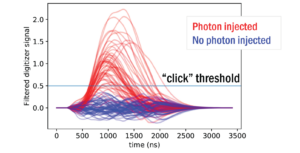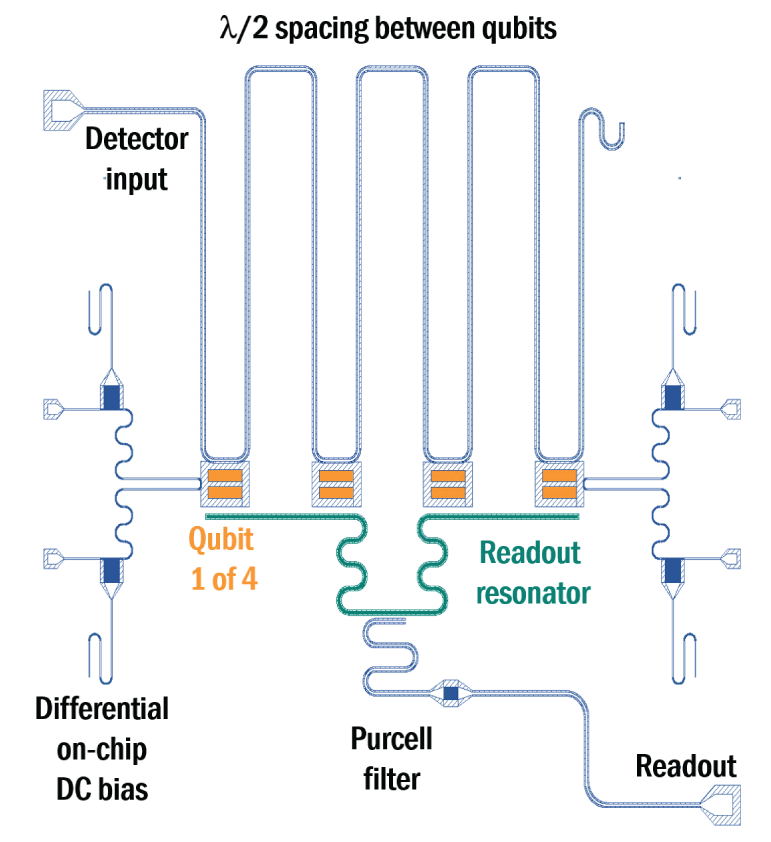 High-efficiency detection of single microwave photons is a challenging task due to their extremely small energy. However, once realized, such a detector could find applications in quantum information processing as a way to actively correct qubit energy relaxation errors or to improve readout for cavity-based dark matter axion searches- as photon counting does not add a half photon of noise like phase preserving amplifiers.
High-efficiency detection of single microwave photons is a challenging task due to their extremely small energy. However, once realized, such a detector could find applications in quantum information processing as a way to actively correct qubit energy relaxation errors or to improve readout for cavity-based dark matter axion searches- as photon counting does not add a half photon of noise like phase preserving amplifiers.
A simple scheme to detect flying photons consists of a qubit absorber coupled to an input waveguide and a readout resonator. Once the qubit changes state by absorbing a flying photon, the dispersively coupled readout resonator shifts in frequency which can be measured with a homodyne detection chain. The bandwidth of the detector must be designed such that the photon is trapped long enough to perform high-fidelity readout, leading to inherently narrowband detectors. Keeping bandwidth large but compensating with strong coupling to the readout resonator leads to excessive backaction which causes the photon to reflect off the detector rather than being absorbed. In order to get around these constraints, we are currently testing a detector [1] based on an ensemble of qubits coupled in such a way that bright states, which have linewidths larger than the inherent qubit linewidth, are formed along with dark states, with linewidths approaching zero. By absorbing a photon into the bright state and transferring it to the long-lived dark state, we circumvent the bandwidth/interaction time tradeoff.
[1] B. Royer, et al., PRL 120, 203602 (2018)

Multiple iterations of finite element simulations and device testing were required to match all design parameters. The current detector has four nearly identical tunable transmons with a maximum frequency of 5.7 GHz and 800 MHz of tunability. Four coils, two on-chip and two off-chip, are used to bias all qubits to the 5.6 GHz operating frequency. Bandstop filters are required for the on-chip bias lines to prevent excessive energy relaxation of the outer two qubits.
Since detector data consists of single shot trajectories, an efficient measurement chain is crucial. Using a JPA preamplifier followed by a JTWPA and HEMT, we achieved a measurement efficiency of 69.1 +/- 4.2%. Additionally, the detector (and the microwave components connected to the detector input) must be very cold in order to minimize dark counts so the experiment is operated at 8 mK.
Current Status & Next Steps
Final characterization of the detector is ongoing. However, a detection fidelity of 84.2% has been demonstrated using a weak coherent tone for a source. An off-chip single photon source (a transmon strongly coupled to a port leading to the detector) is installed in the fridge and will be tested shortly.